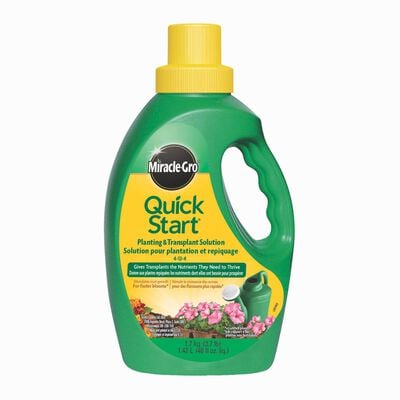
Plant Trees and Shrubs in the Fall
Fall is the best time to plant trees
When adding trees and shrubs to your landscape, planting in the fall offers several benefits. It's an ideal time for you, as all the hard gardening work of spring and the upkeep of summer will be winding down - plus it's the best time for the tree. The combination of warm soil and cool air stimulates root growth to help your tree or shrub get established before the ground freezes. In the fall, trees and shrubs are either sold in containers or with root balls, where the root and soil is wrapped in burlap (often called "balled-and-burlapped"). Planting them is easy. Just follow these simple steps.
Selecting trees and shrubs for your yard
Healthy trees and shrubs will last for decades, so consider your longer-term landscaping goals and how the full-grown trees and shrubs will fit in. Consider trees and shrubs that will provide different features year-round, such as fruit in summer and changing leaf colours in fall. For beautiful blossoms, consider a redbud or ornamental cherry tree.
Leave ample space
Give your new trees and shrubs plenty of room to grow, making sure you research the plant's full-grown size. Refer to the information that comes with the tree or ask your local garden center for recommendations. Use a tape measure to gauge how your new trees and shrubs will fit into your existing landscaping. You don't want to plant a tree too close to your home or neighbour's property, which may cause damage to the buildings and tree roots.
Start digging
Create a hole that's twice as wide as your container and deep enough that the root ball's soil line sits slightly above ground level.
Nourish your new trees and shrubs
Your new trees and shrubs need a good home in nutrient-rich soil. When planting, blend in Miracle-Gro® All Purpose Garden Soil with your native soil in a 50:50 ratio.
Make sure the soil line of the root ball is slightly higher than ground level. If you have a balled-and-burlapped tree, remove all of the twine and as much of the burlap and wire cage as you can. It is especially important to clear off the top half of the rootball, to give roots room to grow. Then, start filling the hole with your soil mixture. When the hole is half-full, water the tree, then fill in the remaining soil. Finally, pull some soil away from the tree trunk to create a donut-shaped ring of soil that will act like a basin to hold water and funnel it to the tree roots, and water moderately again.
Retain moisture with mulch
Most new trees and shrubs will benefit from mulch, which helps conserve moisture in the soil. Using a bark-based mulch layer 3 inches of mulch on top of the soil, leaving about 1 to 2 inches of space around the trunk to prevent disease. For a mulch with long-lasting colour throughout the season, use Scotts® Nature Scapes® Colour Enhanced Mulch.
Watering your new tree or shrub
When watering your new tree or shrub, keep in mind that water needs will be considerable at first. But since you're planting in fall, those needs will soon taper off until spring. As your trees and shrubs are becoming established, water two or three times a week, adjusting for weather and soil condition. Go for infrequent but generous deep soakings.
Feed your new trees
To get your new tree or shrub off to a good start apply Miracle-Gro® Quick Start® Planting & Transplant Starting Solution after planting to help stimulate root growth. The following spring, apply Miracle-Gro® Shake 'n Feed® Flowering Trees & Shrubs Continuous Release Plant Food.


